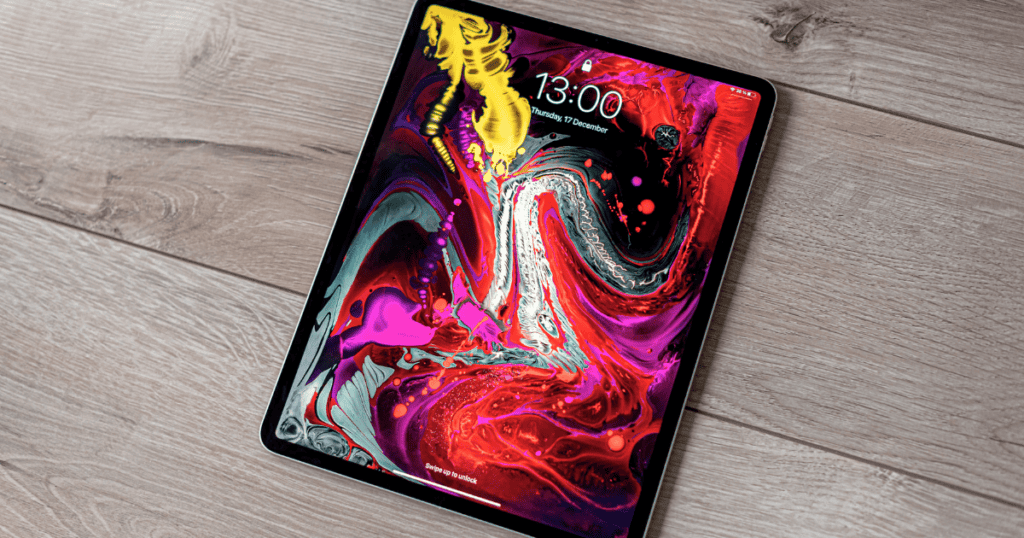The recent launch of the OLED iPad Pro has ushered in a wave of feedback concerning the perceived ‘grainy’ quality of its display, an issue that appears prominently under certain conditions, particularly at lower brightness levels. This phenomenon, attributed by some to the inherent properties of OLED technology, such as pixel dithering, raises important questions about the balance between cutting-edge display technology and user sensory experience. As users report varied sensitivity to this graininess, experts weigh in on the technical underpinnings that might contribute to such effects. This juxtaposition of advanced technology with user experience invites a closer look at how such trade-offs are navigated in high-end consumer electronics.
Understanding OLED Technology
OLED technology, characterized by its use of organic compounds to emit light, enables vibrant colors and deeper blacks by allowing each pixel to individually control its luminance. This inherent capability of OLED displays provides superior picture quality, high contrast ratios, and wide viewing angles compared to other technologies.
However, the unique attributes of OLED may also contribute to the perception of a grainy display in certain scenarios. Each pixel’s ability to independently operate enables exceptional control over brightness and contrast, which is especially evident in how OLED manages near-black shades using techniques like dithering.
These factors are essential in understanding the nuances of OLED technology and the visual experiences it provides.
User Reports of Graininess
Reports from users indicate a grainy appearance on the screens of some Samsung tablets and the iPad Pro M4, often linked to the OLED technology employed in these devices. This issue has sparked considerable discussion among users, especially those sensitive to display quality nuances.
Here are some specific observations:
- Brightness Sensitivity: The graininess tends to be more pronounced at lower brightness settings, particularly when displaying darker or grey hues.
- Dithering Effects: OLED’s utilization of a dithering technique to manage colors close to black can exacerbate the grainy texture perceived by some users.
- Varied User Sensitivity: The degree of graininess noticed varies significantly among individuals, with some only recognizing the issue during side-by-side comparisons with other devices.
Expert Analysis on OLED Screens
Experts often note that the grainy appearance observed in some OLED screens, such as those used in the iPad Pro, can be attributed to the inherent characteristics of the OLED technology itself. OLED panels utilize a unique pixel illumination method, which can vary slightly in uniformity, leading to what some perceive as graininess. This aspect of display technology is often a trade-off for achieving deeper blacks and vibrant colors.
Quality control measures are in place by manufacturers like Samsung and LG, and further verified by Apple, to make certain these variations remain within acceptable limits. However, the sensitivity of human vision to these slight inconsistencies can vary, influencing user perception of the display’s quality.
OLED Vs. Lcd: Visual Comparison
When comparing the visual output of OLED and LCD screens, it becomes evident that OLED technology surpasses LCD in terms of contrast and color accuracy, primarily due to its ability to illuminate individual pixels independently. This distinctive feature of OLED offers several advantages:
- Higher Contrast Ratios: OLED screens display deeper blacks and purer whites, as pixels can turn off completely, enhancing the overall image quality.
- Uniform Brightness and Color: Without a backlight, OLED achieves more consistent brightness and vibrant colors across the entire screen.
- Sharper Details: The precision in lighting individual pixels allows for sharper images, reducing issues like blurring or clouding often seen in LCD screens due to backlight bleeding.
These factors contribute to the superior visual experience of OLED over LCD.
Benefits of OLED in iPad Pro
Equipped with OLED technology, the iPad Pro excels in delivering deeper blacks and enhanced color vibrancy, greatly enhancing the visual experience. This advancement comes with several key advantages that guarantee a superior user experience.
| Feature | Benefit |
|---|---|
| Deeper Blacks | Enhanced color contrast and vibrancy |
| Faster Response Times | Smoother visuals in sports and games |
| Improved Battery Life | Longer usage without frequent charges |
| Always-On Display | Convenient access to essentials |
The integration of OLED into the iPad Pro not only boosts aesthetic appeal but also facilitates innovative functionalities like an always-on display, adding significant value to the device’s everyday practicality. These features collectively underscore the advantages of OLED technology in enhancing the iPad Pro’s capabilities.
Addressing the Grainy Display Issue
Despite the notable enhancements OLED technology brings to the iPad Pro, some users have reported a grainy appearance on the display. This issue primarily stems from the dithering technique used in managing near-black colors on OLED panels.
Here are potential solutions to mitigate this issue:
- Enhanced Quality Control: Strengthening quality assurance checks at manufacturing facilities to guarantee consistency and minimize deviations that lead to grainy displays.
- Software Optimization: Adjusting the software that controls display output could help in reducing perceived graininess by optimizing how colors are rendered.
- Consumer Awareness: Educating users about the characteristics of OLED technology might help set realistic expectations and reduce perceptions of graininess.
These steps could help in addressing the concerns while maintaining the benefits of OLED.
Future of OLED in Apple Products
The integration of OLED technology in Apple products such as the iPad Pro marks a significant step forward in enhancing visual display capabilities and energy efficiency. As Apple continues to innovate, the future of OLED in its product lineup appears promising.
This technology not only delivers superior visual performance but also contributes to longer battery life and more efficient energy use, essential for portable devices. The potential expansion of OLED usage across other Apple products could revolutionize user experiences by offering more vibrant displays and responsive interfaces.
Given the evolving nature of OLED technology, its continued refinement and integration are likely to play a pivotal role in the future design and functionality of Apple products.
User Adaptation to New Displays
As Apple continues to incorporate OLED technology into its products, user adaptation to the new displays, particularly the reported graininess of the iPad Pro, becomes an important consideration. The shift to OLED displays presents a unique set of challenges and opportunities regarding display quality.
Users report a range of experiences:
- Adjustment Period: Many users find that the initial noticeability of graininess diminishes with regular use.
- Settings Optimization: Adjusting display settings such as brightness can enhance user experience and minimize perceived graininess.
- Acclimatization: Over time, users often adapt to the nuances of OLED technology, appreciating its benefits like deeper blacks and vibrant colors.
Understanding these adaptation phases can help in setting realistic expectations and improving user satisfaction.
MacReview Verdict
To sum up, while the grainy texture observed on OLED iPad Pro screens poses a challenge, it also underscores a pivotal question: Is the trade-off between OLED’s superior contrast and potential visual inconsistencies acceptable?
The ongoing evolution of display technologies suggests potential enhancements in OLED uniformity and user experience. As technology advances, one may anticipate improvements that could mitigate such issues, thereby continuing to refine the integration of OLED technology in future Apple products.




